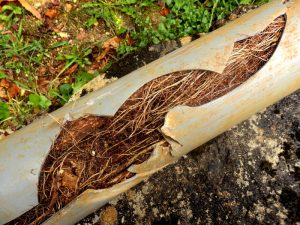Homeownership comes with plenty of responsibilities, and one of the most overlooked yet crucial aspects is the condition of your home’s sewer line. So, what is a sewer line inspection—and why should every homeowner know about it?
A sewer line inspection in Gladden Farms, AZ is a process that involves assessing the condition of the main sewer pipe that connects your home’s plumbing to the municipal sewer system or septic tank. Unlike clogged drains that are easy to spot inside your house, problems with the sewer line are hidden underground and can go unnoticed until significant (and costly) damage occurs.
How Does a Sewer Line Inspection Work?
During a sewer line inspection, a professional plumber uses a specialized waterproof camera attached to a flexible cable. This camera is fed into your home’s drainpipe, allowing the plumber to see the entire length of the sewer line in real time on a monitor. The video feed can reveal cracks, blockages, tree root invasions, pipe sagging (known as a belly), corrosion, and other issues that might be developing underground.
This non-invasive process is quick, highly effective, and provides homeowners with peace of mind or the valuable information needed to plan repairs before they become emergencies.
Signs You May Need a Sewer Line Inspection
While routine inspections are always smart, there are some clear warning signs that indicate you should schedule one right away:
- Frequent Drain Backups: If multiple drains in your home are clogging or backing up at the same time, the issue could lie deep in your sewer line.
- Slow Draining Fixtures: Persistent slow drains in showers, tubs, or sinks can point to a larger blockage.
- Unpleasant Odors: A foul smell of sewage around your yard or basement could mean a break or blockage in your line.
- Soggy or Sunken Patches in the Yard: If you notice soggy spots or depressions in your lawn—especially near where the line runs—it could be leaking wastewater.
- Unexplained Lush Patches of Grass: Sewage acts as a fertilizer, so an unusually green patch could signal a leak underground.
When to Have a Sewer Line Inspection Even Without Obvious Problems
You don’t have to wait for a problem to arise to benefit from a sewer line inspection. Here are a few other smart times to get one done:
- Buying a Home: A general home inspection won’t check the sewer line in detail. Before you sign on the dotted line, invest in a sewer line inspection so you don’t inherit costly hidden problems.
- Older Homes: If your house is more than 30–40 years old and hasn’t had a sewer line inspection recently, it’s worth checking the condition of those older pipes.
- After Major Tree Removal or Planting: Large trees have root systems that can invade pipes. If you’ve recently removed a big tree or planted new ones near the line, an inspection is wise.
- After Flooding or Earth Movement: Heavy rains, floods, or shifting soil can damage underground pipes.
Protect Your Home and Wallet
A sewer line inspection is an affordable step that can prevent unpleasant surprises and major expenses down the road. Whether you’re buying a new home or maintaining your current one, scheduling a professional sewer line inspection is a smart move that pays off in peace of mind. If it’s been a while since yours was last checked, consider booking one today and protect your home from hidden trouble lurking below the surface.
Contact Picture Rocks Cooling, Heating & Plumbing today with any questions or to schedule an appointment with our professionals.


